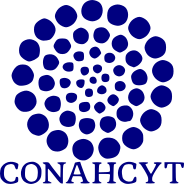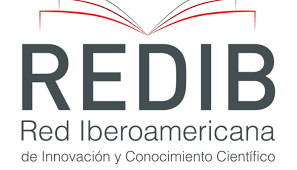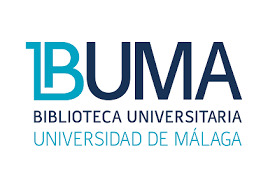Caracterización morfológica de frutos de Malpighia glabra L. en dos regiones bioclimáticas del estado de Yucatán, México
DOI:
https://doi.org/10.18387/polibotanica.58.15Palabras clave:
acerola, recurso fitogenético, región bioclimática, sólidos solubles totalesResumen
Malpighia glabra es una especie frutal silvestre ampliamente distribuida en Yucatán, la cual es desaprovechada debido a la falta de conocimiento sobre sus propiedades. Por lo anterior, el objetivo de esta investigación fue caracterizar la diversidad morfológica de frutos de M. glabra de dos regiones bioclimáticas del estado de Yucatán, México. Para esto, un total de 120 frutos de M. glabra se colectaron de cuatro poblaciones pertenecientes a dos regiones bioclimáticas del estado de Yucatán. Estos frutos se caracterizaron morfológicamente mediante 11 variables que incluyeron el peso de fruto (g), diámetro polar de fruto (mm), diámetro ecuatorial de fruto (mm), índice de forma de fruto, frutos por axila, sólidos solubles totales (ºBrix), peso de semilla (g), diámetro polar de semilla (mm), diámetro ecuatorial de semilla (mm), espesor de semilla (mm) e índice de forma de semilla. Los datos fueron analizados por análisis de varianza, para evaluar las relaciones morfológicas entre las poblaciones estudiadas se realizó un análisis de componentes principales (ACP) y un análisis multivariado con el método UPGMA y la distancia de similitud de Gower. Los frutos de M. glabra presentaron forma de oblato. En general, se observó la formación de tres grupos, siendo las variables de peso de fruto, diámetro polar de fruto, diámetro ecuatorial de fruto, sólidos solubles totales y frutos por axila las que contribuyeron más en la diferenciación de los grupos. Los tres primeros componentes principales explicaron 87.45% de la variación acumulada entre los grupos.
Referencias
Abdelhamid, K., Bouchenafa, N., Mederbal, K., & Dahlia, F. (2022). Assessment of morphological variability of leaves and fruits of three natural populations of wild caper (Capparis spinosa L.) in western Algeria. Biodiversity Journal, 13(2), 373–380. https://doi.org/10.31396/biodiv.jour.2022.13.2.373.380
Alia-Tejacal, I., Astudillo-Maldonado, Y. I., Núñez-Colín, C. A., Valdez-Aguilar, L. A., Bautista-Baños, S., García-Vázquez, E., Ariza-Flores, R., & Rivera-Cabrera, F. (2012). Caracterización de frutos de ciruela mexicana (Spondias purpurea l.) del sur de México. Revista Fitotecnia Mexicana, 35, 21–26.
Anderson, W. R. (2013). Originis of mexican Malpighiaceae. Acta Botanica Mexicana, 104, 107–156.
Avakoudjo, H. G. G., Mensah, S., Idohou, R., Koné, M. W., & Assogbadjo, A. E. (2022). Effects of climate and protection status on growth and fruit yield of Strychnos spinosa Lam., a tropical wild fruit tree in West Africa. Trees, 36(3), 1117–1129. https://doi.org/10.1007/s00468-022-02276-2
Bautista, F. (2021). Los territorios kársticos de la península de Yucatán: caracterización, manejo y riesgos. Asociación Mexicana de Estudios sobre el Karst.
Boublenza, I., El haitoum, A., Ghezlaoui, S., Mahdad, M., Vasaï, F., & Chemat, F. (2019). Algerian carob (Ceratonia siliqua L.) populations. Morphological and chemical variability of their fruits and seeds. Scientia Horticulturae, 256, 1–8. https://doi.org/10.1016/j.scienta.2019.05.064
Boussaid, M., Taïbi, K., Ait Abderrahim, L., & Ennajah, A. (2018). Genetic diversity of Ziziphus lotus natural populations from Algeria based on fruit morphological markers. Arid Land Research and Management, 32(2), 184–197. https://doi.org/10.1080/15324982.2018.1424742
Brunini, M. A., Barbosa Macedo, N., Coelho, C. V., Ferraz, G., & Siqueira, D. E. (2004). Caracterização física e química de acerolas provenientes de diferentes regiões de cultivo. Revista Brasileira Fruticultura, Jaboticabal-SP, 486–489.
Cáceres, A., Juh-Ez, X., De1 Aguila, J., & Garciac, S. (1993). Plants used in Guatemala for the treatment of dermatophytic infections. 2. Evaluation of antifungal activity of seven American plants. Journal of Ethnopharmacology, 40, 207–213.
Calvo-Irabién, L. M., Parra-Tabla, V., Acosta-Arriola, V., Escalante-Erosa, F., Díaz-Vera, L., Dzib, G. R., & Peña-Rodríguez, L. M. (2014). Phytochemical diversity of the essential oils of Mexican oregano (Lippia graveolens Kunth) populations along an edapho-climatic gradient. Chemistry and Biodiversity, 11(7), 1010–1021. https://doi.org/10.1002/cbdv.201300389
Cavalcante, E. S., Junior, F. A. C. M., Evangelista, T. Y. L., Pereira, G. A., Souza, F. de F., & Junior, G. B. da S. (2021). Yield and physicochemical characteristics of west indian cherry genotypes grown in the semi-arid region. International Journal of Advanced Engineering Research and Science, 8(12), 421–426. https://doi.org/10.22161/ijaers.812.44
Cavalcante, Í. H. L., Beckmann, M. Z., Martins, A. B. G., & Campos, M. C. C. (2007). Preliminary selection of acerola genotypes in Brazil. Fruits, 62(1), 27–34. https://doi.org/10.1051/fruits:2006046
Chandra Naithani, D., Rawat, J. M. S., Singh, B., Khanduri, V. P., & Riyal, M. K. (2020). Determination of physico-chemical properties of aonla (Emblica officinalis Gaerth) fruits among different populations in Garhwal Himalaya. International Journal of Fruit Science, 20(S3), S1579–S1589. https://doi.org/10.1080/15538362.2020.1822264
Chowdhury, A., Yonemoto, Y., Kato, H., & Macha, M. (2005). Classification of some acerola (Malpighia glabra Linn.) cultivars using morphometric descriptors and RAPD markers. Japanese Journal of Tropical Agriculture, 49(4), 255–263.
Cvetković, M., Kočić, M., Dabić Zagorac, D., Ćirić, I., Natić, M., Hajder, Đ., Životić, A., & Fotirić Akšić, M. (2022). When is the right moment to pick blueberries? variation in agronomic and chemical properties of blueberry (Vaccinium corymbosum) cultivars at different harvest times. Metabolites, 12(9), 1–19. https://doi.org/10.3390/metabo12090798
Da Silva, L. R., Figueiredo, A. R., Jacintho Barbosa, M. I. M., De Oliveira, M. M. T., Villa, F., & De Morais, L. A. S. (2022). Physicochemical characterization and bioactive potential in Dovyalis hebecarpa Warb fruits. Acta Brasiliensis, 6(3), 101–105. https://doi.org/10.22571/2526-4338577
Da Silva Nunes, R., Silva Kahl, V. F., Da Silva Sarmento, M., Richter, M. F., Abin-Carriquiry, J. A., Martinez, M. M., De Barros Falcão Ferraz, A., & Da Silva, J. (2013). Genotoxic and antigenotoxic activity of acerola (Malpighia glabra L.) extract in relation to the geographic origin. Phytotherapy Research, 27(10), 1495–1501. https://doi.org/10.1002/ptr.4896
Di Rienzo, J. A., Casanoves, F., Gonzalez, L. A., Tablada, E. M., Dıaz, M. P., Robledo, C. W., & Balzarini, M. G. (2018). Infostat (2018). FCA Universidad Nacional de Córdoba.
Donhouedé, J. C. F., Marques, I., Salako, K. V., Assogbadjo, A. E., Ribeiro, N., & Ribeiro-Barros, A. I. F. (2023). Genetic and morphological diversity in populations of Annona senegalensis Pers. occurring in Western (Benin) and Southern (Mozambique) Africa. PeerJ, 11. https://doi.org/10.7717/PEERJ.15767
El-Hawary, S. S., El-Fitiany, R. A., Mousa, O. M., Salama, A. A. A., & El Gedaily, R. A. (2021). Metabolic profiling and in vivo hepatoprotective activity of Malpighia glabra L. leaves. Journal of Food Biochemistry, 45(2), 1–15. https://doi.org/10.1111/jfbc.13588
Esquivel-Chi, M. C. (2021). Efecto repelente de extractos etanólicos de plantas de la península de Yucatán contra mosquita blanca (Bemisia tabaci Genn.) [Maestría en ciencias]. TecNM Campus Conkal.
Farinelli, D., Portarena, S., da Silva, D. F., Traini, C., da Silva, G. M., da Silva, E. C., da Veiga, J. F., Pollegioni, P., & Villa, F. (2021). Variability of fruit quality among 103 acerola (Malpighia emarginata d. c.) phenotypes from the subtropical region of Brazil. Agriculture (Switzerland), 11(11), 1–19. https://doi.org/10.3390/agriculture11111078
Fekry, A., Elsabbagh, walaa, Abu Bakr, M., El-Ghazaly, M., & Mohamed, A. E.-S. (2021). Antioxidant activity of Malpighia glabra L., leaves extract. Azhar International Journal of Pharmaceutical and Medical Sciences, 1(2), 88–93. https://doi.org/10.21608/aijpms.2021.59935.1042
Ferreira, S. S., Silva, P., Silva, A. M., & Nunes, F. M. (2023). Effect of cultivar, maturation stage, and year on sugar and phenolic composition of elderberries. Journal of the Science of Food and Agriculture, 103(4), 2023–2036. https://doi.org/10.1002/jsfa.12271
Goldschmidt, E. E. (2013). The Evolution of Fruit Tree Productivity: A Review. Economic Botany, 67(1), 51–62.
Gomes, J. E., Perecin, D., Baldo, A., Martins, G., José, E., & Almeida, D. E. (2000). Variabilidade fenotípica em genótipos de acerola 1. Pesquisa Agropecuária Brassileira, 11, 2205–2211.
Guizani, M., Dabbou, S., Maatallah, S., Montevecchi, G., Hajlaoui, H., Rezig, M., Helal, A. N., & Kilani-Jaziri, S. (2019). Physiological responses and fruit quality of four peach cultivars under sustained and cyclic deficit irrigation in center-west of Tunisia. Agricultural Water Management, 217, 81–97. https://doi.org/10.1016/j.agwat.2019.02.021
Hoang, Q. B., Pham, N. T., Le, T. T., & Duong, T. N. D. (2022). Bioactive compounds and strategy processing for acerola: A review. Can Tho University Journal of Science, 14(2), 46–60. https://doi.org/10.22144/ctu.jen.2022.011
Ito, A., Kajiwara, Y., Kanmera, S., Ishihata, K., Harada, K., Ogata, T., Kubo, T., Tominaga, S., & Yamamoto, M. (2014). Identification of acerola (Malpighia glabra L.) accesions by SRAP Markers. Tropical Agriculture and Development, 58(1), 30–32.
Jasmitha, B. G., & Honnabyraiah. (2021). West Indian Cherry: Nature’s Vitamin-C Capsule. AgriCos E-Newsletter, 02(04), 5–8. www.agricosemagazine.com
Jiménez-Osornio, J., Pastrana, D., Molina, A., Ruenes, M. del R., Montañez, P., & Lendechy, Á. (2018). Sustainable agriculture through resurrecting indigenous fruits in Yucatán. In C. Scherrer & S. Verma (Eds.), Decent Work Deficits in Southern Agriculture: Measurements, Drivers and Strategies (First, pp. 305–322). Rainer Hampp Verlag.
Khan, M. R., Khan, M. A., Habib, U., Maqbool, M., Rana, R. M., Awan, S. I., & Duralija, B. (2022). Evaluation of the Characteristics of Native Wild Himalayan Fig (Ficus palmata Forsk.) from Pakistan as a Potential Species for Sustainable Fruit Production. Sustainability (Switzerland), 14(1), 1–16. https://doi.org/10.3390/su14010468
Kumar, S., Bhajipale, N. S., Sanghai, D. B., & Padgilwar, S. S. (2017). Phytochemical and pharmacological overview of acerola cherry: a review. International Journal of Research in AYUSH and Pharmaceutical Sciences IJRAPS, 1(1), 2456–9909.
Léchaudel, M., & Joas, J. (2007). An overview of preharvest factors influencing mango fruit growth, quality and postharvest behaviour. Brazilian Journal Plant Physiology, 19(4), 287–298.
Macêdo, M. do A. de M., Souza, R. T. B., Costa, D. N., Santos, J. O. dos, Reis, R. B. dos, Silva, L. L. da, & Andrade, I. M. de. (2022). Prospecção científica e tecnológica de quercetina: uso de espécies de Malpighia L. (acerola) como potencial para o tratamento de COVID-19. Research, Society and Development, 11(1), 1–13. https://doi.org/10.33448/rsd-v11i1.24715
Magalhãe, D. S., Rufni, J. C. M., Alburquerque, A. S., Viol, R. E., Fagundes, M. C. P., & De Menezes, T. P. (2018). Genetic diversity among accessions of acerola based on the quality of fruits. Comunicata Scientiae, 9(2), 133–141. https://doi.org/10.14295/CS.v9i2.2961
Maldonado-Peralta, M. D. los Á., García De Los Santos, G., García Nava, J., Corona Torres, T., Cetina Alcalá, V., & Ramírez Herrera, C. (2016). Calidad morfológica de frutos y endocarpios del nanche rojo (Malpighia mexicana, Malpighiaceae). Acta Botánica Mexicana, 117, 37–46.
Menezes, T. P., Rufini, J. C. M., Pio, L. A. S., Magalhaes, D. S., & Chain, C. P. (2019). Physical and chemical characterization of fruits and DNA content in genotypes of acerola tree. Brazilian Journal Of Agriculture - Revista de Agricultura, 93(3), 336–348. https://doi.org/10.37856/bja.v93i3.3323
Mezadri, T., Pablo de Olavide, U., Villaño, D., & Carmen Garcia-Parrilla, M. (2006). The acerola fruit: composition, productive characteristics and economic importance Ministerio de Economía, Industria y Competitividad view project María-Soledad Fernández Pachón. Archivos Latinoamericanos de Nutrición, 56(2), 1–16. https://www.researchgate.net/publication/6770011
Morais, M. C., Mucha, Â., Ferreira, H., Gonçalves, B., Bacelar, E., & Marques, G. (2019). Comparative study of plant growth-promoting bacteria on the physiology, growth and fruit quality of strawberry. Journal of the Science of Food and Agriculture, 99(12), 5341–5349. https://doi.org/10.1002/jsfa.9773
Moura, C. F. H., Ribeiro, L. B., Oliveira, L. de S., de Souza, K. O., de Miranda, M. R. A., da Franca, L. G., & de Souza, P. A. (2018). Acerola—Malpighia emarginata. In Exotic Fruits Reference Guide (pp. 7–14). Elsevier. https://doi.org/10.1016/B978-0-12-803138-4.00003-4
Narwojsz, A., Tańska, M., Mazur, B., & Borowska, E. J. (2019). Fruit physical features, phenolic compounds profile and inhibition activities of cranberry cultivars (Vaccinium macrocarpon) compared to wild-grown cranberry (Vaccinium oxycoccus). Plant Foods for Human Nutrition, 74(3), 300–306. https://doi.org/10.1007/s11130-019-00737-7
Nascimento, E. M. M., Rodrigues, F. F. G., Costa, W. D., Teixeira, R. N. P., Boligon, A. A., Sousa, E. O., Rodrigues, F. F. G., Coutinho, H. D. M., & da Costa, J. G. M. (2018). HPLC and in vitro evaluation of antioxidant properties of fruit from Malpighia glabra (Malpighiaceae) at different stages of maturation. Food and Chemical Toxicology, 119, 457–463. https://doi.org/10.1016/j.fct.2017.11.042
Okigbo, R. N., Chiamaka Frances, E., Okigbo, R. N., & Anyaegbu, C. F. (2021). Underutilized plants of Africa. Journal of Biology and Nature, 13(2), 34–49.
Orellana, R., Balam, M., Bañuelos, I., García, E., González-Iturbide, J., Herrera, F., & Vidal, J. (1999). Evaluación climática. En García de Fuentes, A., Cordoba-Ordóñez, J., Chico Ponce de León, P. (Eds.). Atlas de procesos territoriales de Yucatán (pp.162). Universidad Autónoma de Yucatán.
Ouédraogo, S., Bondé, L., Ouédraogo, O., Ouédraogo, A., Thiombiano, A., & Boussim, I. J. (2020). To what extent do tree size, climate and land use influence the fruit production of Balanites aegyptiaca (L) delile in tropical areas (Burkina Faso)? International Journal of Fruit Science, 20(3), 282–299. https://doi.org/10.1080/15538362.2019.1619216
Pasa, M. C., Da, L., Oliveira, S., Antunes, E., Lima, S., Klein, É., Fernandes Neto, F., Penedo, H., & Alves Da Silva, S. S. (2022). Medicina tradicional e COVID-19 no Brasil. Revista Biodiversidade, 21(1), 1–18.
Pathmanaban, P., Gnanavel, B. K., & Anandan, S. S. (2019). Recent application of imaging techniques for fruit quality assessment. Trends in Food Science and Technology, 94, 32–42. https://doi.org/10.1016/j.tifs.2019.10.004
Pinto, Z. T., Carneiro, J. F., Carriço, C., Caetano, R. L., Ferreira, V. dos S. B., Mendonça, P. M., Berenger, A. L. R., & Figueiredo, M. R. (2018). Acaricidal effects of seven brazilian plant extracts. Revista Colombiana de Entomologia, 44(1), 44–47. https://doi.org/10.25100/socolen.v44i1.6541
Poljak, I., Vahčić, N., Liber, Z., Tumpa, K., Pintar, V., Zegnal, I., Vidaković, A., Valković, B., Kajba, D., & Idžojtić, M. (2021). Morphological and chemical diversity and antioxidant capacity of the service tree (Sorbus domestica L.) fruits from two eco‐geographical regions. Plants, 10(8), 1–21. https://doi.org/10.3390/plants10081691
Prakash, A., & Baskaran, R. (2018). Acerola, an untapped functional superfruit: a review on latest frontiers. Journal of Food Science and Technology, 55(9), 3373–3384. https://doi.org/10.1007/s13197-018-3309-5
Romero-Román, M. E., Schoebitz, M., Bastías, R. M., Fernández, P. S., García-Viguera, C., & López-Belchi, M. D. (2021). Native species facing climate changes: Response of calafate berries to low temperature and UV radiation. Foods, 10(1), 1–13. https://doi.org/10.3390/foods10010196
Sama, H., Traoré, D. K., Guenné, S., Hilou, A., & Dicko, M. H. (2022). Effect of pedo-climatic conditions on physicochemical characteristics and agro-industrial potential of three native oilseeds fruits from Burkina Faso. BMC Plant Biology, 22(321), 1–10. https://doi.org/10.1186/s12870-022-03713-7
Segura, S., Fresnedo, J., Mathuriau, C., López, J., Andrés, J., & Muratalla, A. (2018). The edible fruit species in Mexico. Genetic Resources and Crop Evolution, 65(6), 1767–1793. https://doi.org/10.1007/s10722-018-0652-3
Seka, D., Kouago, B. A., & Bonny, B. S. (2023). Assessment of the variability of the morphological traits and differentiation of Cucurbita moschata in Cote d’Ivoire. Scientific Reports, 13(3689), 1–14. https://doi.org/10.1038/s41598-023-30295-7
Tena-Meza, M., Navarro-Cerrillo, R. M., & Brizuela Torres, D. (2021). Distribution of Malpighia mexicana in Mexico and its implications for Barranca del Río Santiago. Journal of Forestry Research, 32(3), 1095–1103. https://doi.org/10.1007/s11676-020-01157-z
Torres-Contreras, A. M., Garcia-Baeza, A., Vidal-Limon, H. R., Balderas-Renteria, I., Ramírez-Cabrera, M. A., & Ramirez-Estrada, K. (2022). Plant secondary metabolites against skin photodamage: Mexican plants, a potential source of UV-radiation protectant molecules. Plants, 11(2), 1–25. https://doi.org/10.3390/plants11020220
Yang, X., Zhu, L., Huang, X., Zhang, Q., Li, S., Chen, Q., Wang, Z., & Li, J. (2022). Determination of the soluble solids content in Korla fragrant pears based on visible and near-infrared spectroscopy combined with model analysis and variable selection. Frontiers in Plant Science, 13(938162), 1–10. https://doi.org/10.3389/fpls.2022.938162
Zhang, C., Cui, L., & Fang, J. (2022). Genome-wide association study of the candidate genes for grape berry shape-related traits. BMC Plant Biology, 22(42), 1–19. https://doi.org/10.1186/s12870-022-03434-x
Descargas
Publicado
Número
Sección
Licencia

Polibotánica por Departamento de Botánica de la Escuela Nacional de Ciencias Biológicas del Instituto Politécnico Nacional se distribuye bajo una Licencia Creative Commons Atribución-NoComercial-CompartirIgual 4.0 Internacional.




















